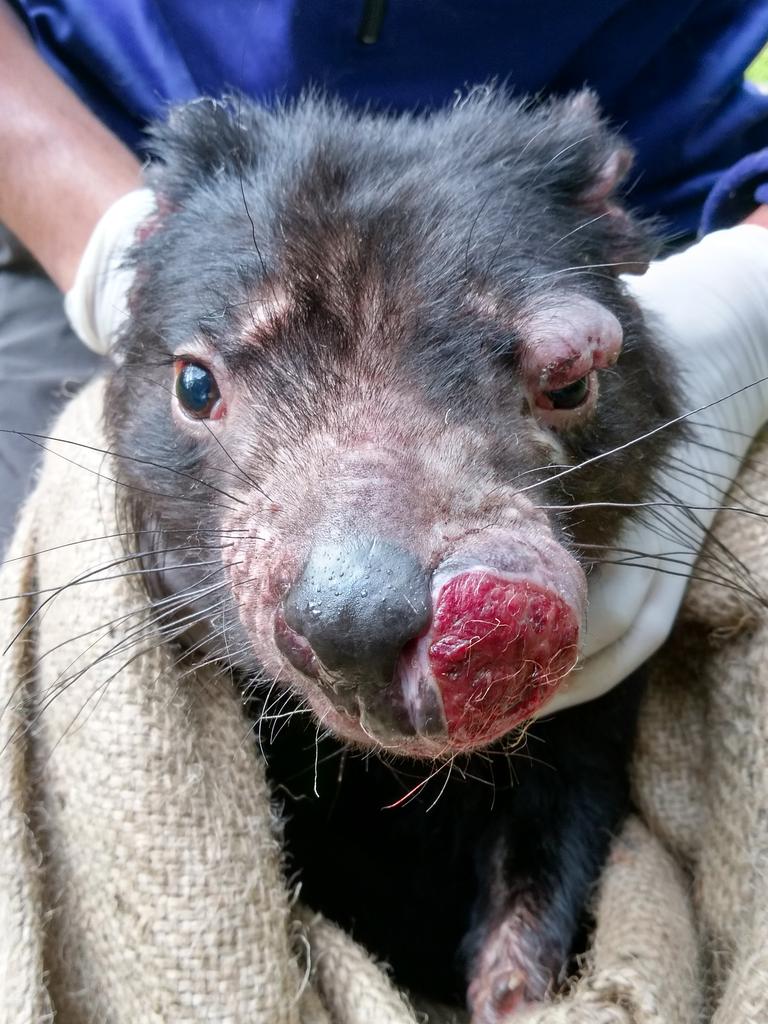Talking Point: Baby steps in quest to save little devils
Hi-tech human cancer treatments offer new hope for Tasmanian devils, but there are simple ways we can all combat Australia’s extinction problem, says ANDREW FLIES

AT least 100 Australian species are known to have gone extinct since European colonists first arrived in Australia in 1788.
Despite this likely being much less than the real number of extinctions, the Australian extinctions account for more than 5 per cent of the total documented extinctions across the planet.
Closer to home, the last known Thylacine, or Tasmanian tiger, died in Hobart in 1936.
Tasmanian tiger paraphernalia fill the shelves of tourist shops, and dozens of Tasmanian business have “tiger” in their ABN registered business name. The Tassie tigers are gone but not forgotten.
In 1996 a photograph was taken in Mt William National Park of a Tasmanian devil with what appeared to be a large facial tumour.
A few years later biologist Menna Jones recorded an observation of another devil with a similar tumour.
Over the next few years Tasmanian devil facial tumour disease spread across most of the state and killed thousands of devils. In 2006 it was demonstrated that the devil facial tumour disease (DFTD) was caused by a contagious cancer. Unfortunately, in 2014 a second, independent type of transmissible cancer was found in devils in the D’Entrecasteaux Channel region in southern Tasmania.

Contagious, or transmissible, cancers are extremely rare in nature because the immune system of most animals can detect and kill cells that are genetically different, such as cells infected with viruses or mutated cancer cells.
This is the reason that people who often get organ transplants from close relatives genetically similar to themselves.
The transmissible tumour cells that cause the DFTD are essentially transplanted from one devil to the next, so a key question for scientists is why doesn’t the devil immune system kill the dangerous, non-self tumour cells.
One of the early ideas as to why the devil immune system does not kill the invading tumour cells is that devils are an inbred island population and there was insufficient genetic differences among wild devils for the immune system to recognise the tumour cells as non-self.
However, studies led by Greg Woods showed that devils could reject skin transplants from other devils.
Genetic similarity plays a role in why the devil immune system doesn’t reject transmissible tumours, but it isn’t the only reason.
By 2017, researchers at the University of Tasmania’s Menzies Institute for Medical Research and Tasmanian School of Medicine were able to stimulate the devil immune system enough to make some tumours disappear. This good news was mirrored by the discovery that a few wild devils had natural tumour regressions.
Amazing progress has been made for treating human cancer in the past decade by stimulating the patient’s immune system to kill cancer cells.

My team is tracking the most promising immunotherapy approaches, and exploring ways to re-engineer human cancer treatments into treatments for devils.
A DFTD treatment that could reliably cure devils would be a major accomplishment, but our ultimate goal is to develop a vaccine that stops devils from getting DFTD in the first place.
We are working on an oral bait vaccine approach that combines techniques from 50 years of wildlife vaccines with a vaccine platform like several of the leading COVID-19 vaccine candidates.
Our efforts to develop a vaccine for Tassie devils has resulted in a wealth of tools and knowledge and made Tasmania an emerging global hub for wild immunology.
Our students are being trained in cutting-edge techniques that can drive biomedical innovation in Tasmania. Protecting threatened species is an investment that supports Tasmania’s natural resources and the tourism economy, enhances the capacity for developing groundbreaking technologies, and gives future generations the chance to enjoy and wonder at Tasmania’s remarkable species.
Support from the Tasmanian community has been critical for our pioneering research and makes us optimistic about the future of the devil.
However, important questions remain, and devils are the only mammal in the world fighting two different contagious cancers, so predicting the future is difficult.
We need to continue monitoring devil populations in the wild and be thoughtful in our own daily actions.
Simple things like driving slowly at night, keeping cats and dogs indoors and maintaining wildlife habitat can help curb Australia’s ongoing extinction problem.
● Watch Monday’s free “Devil in the Detail: Tassie’s threatened species” event at https://www.utas.edu.au/events/2020/septermber/devil-in-the-detail-national-threatened-species-day-forum
Dr Andrew Flies is a senior research fellow and ARC Discovery Early Career Researcher at the Menzies Institute for Medical Research, College of Health and Medicine, University of Tasmania.


